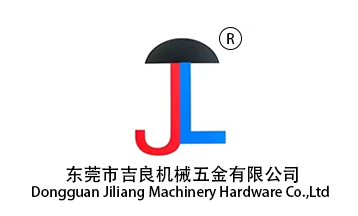Custom rivets in aerospace?
Material usage: Address the requirements of demanding settings
-Titanium alloys (e.g., Ti-6Al-4V), aluminum alloys (e.g. 7075-T6) and special rivets for composite materials - used for weight reduction with good strength.
Materials resistant to high temperature: Nickel-based superalloys (Inconel 718, etc) are applied in the engines and high temperature region, resistant to high temperatures above 1000 °C.
Corrosion resistance treatment: surface coating (cadmium plating, galvanized nickel, etc.) or nonoxide treatment to prevent salt spray and humid environment corrosion.
Design features: Make properties and operations efficient
Recessed (Countersunk Head) - to reduce airflow effect, used on exterior skin of an aircraft. Round head rivets are used in non-exposed areas.
Fatigue preventing: Interference Fit Rivets dissipate concentration of stress and lengthen the life span of structure.
Special function design: Blind Rivets: use for hard-to-reach parts; High lock rivets (Hi-Lok) have combined advantages of bolts and rivets, provide removable connections.
Application scenario
Aircraft fuselages and wings: Hundreds of thousands to millions of rivets are required to fasten skin, stringer and frame (the Boeing 747, for example, uses about 6 million).
Engine components: heat-resistant rivets fastened on combustion chamber, turbine blades, etc. Anti-loosening design.
Titanium Alloy rivets for satellite structures, and Heat resistant rivets (such as ceramic coatings) down come use in the reentry chamber thermal protection system.
Composite structure: special rivets (such as carbon fiber reinforced rivets) to prevent galvanic corrosion, adaptability thermal expansion coefficient.
Technical advantages
Lightweight and efficient: custom rivets can be 30%-50% lighter than traditional bolts, with considerable improvements in fuel efficiency.
Structural reliability – Using finite element analysis (FEA) to optimize design to remain stable under vibration and shock loads.
Simple assembly process: Automated riveting robots (e.g. electromagnetic riveting technology) can increase assembly efficiency and reduce errors in the hands of workers.
Challenges and solutions
Material compatibility: The use of spacers or coatings to prevent contact corrosion of dissimilar materials (aluminum and carbon fiber for example).
Q/C Inspection 100% NDT (X-ray / Ultrasonic) No Internal Defects
Cost and cycle time: 3D printing or precision casting low volume custom production, is an easy way to lower costs and lead times.
Innovation trends
Bead smart rivets: Integrated micro sensors to monitor structural health (e.g. strain, temperature).
Eco-friendly manufacturing: rivet using recycled material and environment-friendly surface processing technology.
Additive manufacturing: Personalisation — You design the rivet; we print it
Sum up
Just as the custom rivet is an indispensable “invisible hero” of the aerospace industry, performing a central role in ensuring flight safety while driving performance improvements and reduced costs through material, design and process innovation creating airplane integration solutions galore, this data has been used with a better micro fabrications and manufacturing process to develop a new and stronger rivet that requires less maintenance and lower risk. Over the years as technology will evolve it will bring very intelligent and sustainable applications.
Submit for an Online Quote:
Send us (sale802@jiliang988.com) the completed form along with your drawing, and we’ll provide you with a fast and competitive quote.
If you have any questions or need assistance, feel free to contact us. We’re here to help!

 Language
Language









